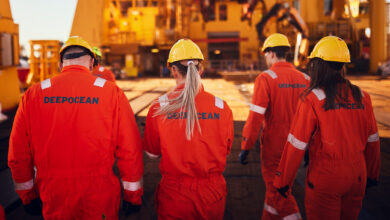Seadrill announces change to Board of Directors
Seadrill has announced that Glen Ole Rødland has been selected to succeed John Fredriksen as Chairman of Seadrill effective from 21 November 2019.
Glen has extensive experience working in shipping, oil and gas and other industries for more than 25 years. He is currently chairman of Prosafe and AqualisBraemar and is a former partner of the Norwegian investment companies Ferncliff and HitecVision.
In addition, as part of the board succession planning process, Seadrill confirms that Harald Thorstein will step down as non-executive director of Seadrill effective from 21 November 2019.
Gunnar Winther Eliassen will be appointed to the Seadrill Board as non-executive director effective 21 November 2019. Mr Eliassen is employed by the Seatankers Group, an affiliate of the company’s largest shareholder, Hemen Holding Limited. Prior to joining Seatankers, Mr Eliassen was partner at Pareto Securities in New York and Oslo.
“I have been actively involved with Seadrill during the 14 years since its inception,” Mr Fredriksen said. “While I have now decided to spend less time on board seats, my close involvement and strong support of Seadrill will remain unchanged. I will continue to push for business optimization, strategic initiatives such as the recent joint ventures with Sonangol and GDI, and consolidation in the sector.”
“It is an honor to be joining Seadrill” Mr Rødland said. “It is a company that has huge potential, an innovative approach to the future of the industry and great people. I am looking forward to being part of the team and to helping Seadrill be the best company it can be.”
“Mr Fredriksen handing over the Chairmanship to Mr Rødland, is for us very much business as usual,” Anton Dibowitz, Seadrill CEO, said. “Hemen remains our anchor shareholder. I will continue to have a close dialogue with Mr Fredriksen and benefit from his input and perspectives. On a personal level, I would like to extend my thanks and gratitude to Mr Fredriksen for his leadership of the board to date. I would like to welcome Mr Rødland, and I look forward to working together.”




